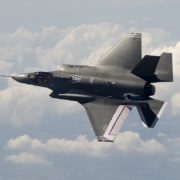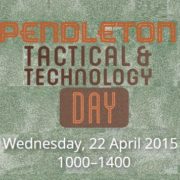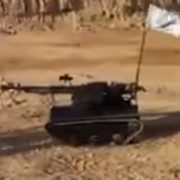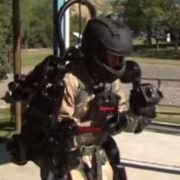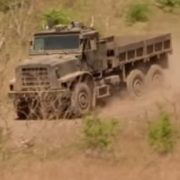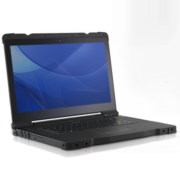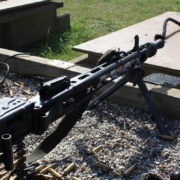After more than a decade of hit-and-miss and one-step-forward/two-steps-backward development, the CS-13 (Capability Set 13) is finally being deployed with combat troops.
CS-13 includes:
- Nett Warrior (squad leader networking)
- Win-T (Warfighter Information Network-Tactical Increment 2)
- BFT 2 (Blue Force Tracking 2)
- Company Command Post
- Tactical radios such as AN/PRC-117G and Rifleman Radio
- Combat smart phones
Even allowing for the usual mess of confusing acronyms, these communication programs have been exceptionally difficult to track. In response to rapidly changing technology, end-user feedback, as well as new requirements, they have undergone constant transformation. Nett Warrior alone has gone through more changes than a nervous teenage girl preparing for a date.
Strategy page has a detailed look at this complex and multilayered communications initiative. Their article is reprinted in full below:
After two years of testing the U.S. Army is putting its new communications system; Win-T (Win-T Increment 2) into service with combat troops. This comes after lots of development and testing. Back in 2013 four combat brigades were equipped with CS-13 (Capability Set 13), which includes Win-T, for testing under realistic conditions. That resulted in several changes to the hardware and software and final approval of the system. Now units headed for combat are being equipped. The first two units to receive Win-T are Stryker brigades in Texas and Washington State.
CS-13 consists of several different technologies the army has been developing since the 1990s. Some of these items have already been in combat. CS-13 includes Nett Warrior (an effort to get networking down to the squad leader), Win-T (Warfighter Information Network-Tactical Increment 2, a battlefield Internet), BFT 2 (Blue Force Tracking 2 for tracking troop location in real time), Company Command Post (giving company commanders more data), and tactical radios like AN/PRC-117G, Rifleman Radio, and combat smart phones. CS 13 is the result of over a decade of effort to create better battlefield communications, including a combat version of the Internet. The final selection took between 2011 and 2013 as 115 systems were tested by troops and those found wanting (most of them) dropped.
WIN-T was designed to allow troops to simultaneously exchange text, data, video, and voice data using a new generation of radios. Personal computers and smart phones (including both off-the-shelf and “ruggedized” military models) can hook into WIN-T and use the future improved communications and networking. In effect it is wi-fi for a combat zone that provides Internet-like capabilities to troops who are under fire.
One of the new devices that have been in action the longest have gone through several generations of upgrades. Thus JBC-P (Joint-Battle Command Platform) is the latest version of BFT and has several improvements. The most welcome improvement was much faster (almost instantaneous) updates of information. The satellite signals are now encrypted and work no matter the weather, temperature of distance. While every vehicle is equipped with one of these devices, Individual troops on the ground now have a smartphone type BFT device that allows them to chat and quickly shows on the display the location of nearby JBC-P users and has a zoom capability similar to Google Earth. Troops can quickly update enemy locations, bombs or otherwise dangerous areas. These smartphones are typically worn on the forearm for easy use in combat. The purpose of all these improvements is to enable troops arriving (by land or air) in an area where contact with the enemy is expected to immediately go into action knowing where everyone (on foot or in vehicles) is and where they are moving to.
Company Command Post gives a company commander the ability to quickly send and receive (and sort out) text, voice, and data with his troops (three platoons consisting of nine squads and special teams of snipers and machine-guns). This provides company commanders, using a laptop and other gear that can be carried while on foot, the same kind of command post capabilities previously restricted to battalion, brigade, and larger headquarters.
The key radios in CS 13 are the AN/PRC-117G, the AN/PRC-154, and the combat smart phone. AN/PRC-117G is a 5.45 kg (12 pound) radio that can be carried or installed in vehicles. About a third of its weight is the battery. It has a maximum output of 20 watts and handles FM, UHF, and VHF signals, including satellite based communications. On the ground max range is 20 kilometers (depending on hills and the antenna used). The U.S. has been using the AN/PRC-117 since the late 1990s, as an interim radio, and found it a solid piece of equipment. The AN/PRC-117 is based on a commercial design (the Falcon series) that several foreign armed forces and many civilian operations use. The AN/PRC-117 has been regularly upgraded in that time (going from version A to the current G). AN/PRC-154 (or RR for Rifleman Radio) are lightweight (1 kg/2.2 pound) voice/data radios for individual infantrymen. RR includes GPS and a battery good for over ten hours of use. The RR has been undergoing tests since 2010. For most of 2012, U.S. Army Rangers have been using them in Afghanistan. By itself, the two watt RR has a range of up to two kilometers. But it can also automatically form a mesh network, where all RRs within range of each other can pass on voice or data information. During the field tests this was done to a range of up to 50 kilometers. The RR can also make use of an aerostat, UAV, or aircraft overhead carrying a RR to act as a communications booster (to other RRs or other networks). The mesh network enables troops to sometimes eliminate carrying a longer range (and heavier) AN/PRC-117 for the platoon leader. The combat smart phone is a ruggedized Android smart phone, equipped to handle military communications via the mesh network.
CS-13 provides capabilities that, before September 11, 2001, where not expected until the 2020s. But because of all the American troops seeing combat in Iraq and Afghanistan, there were opportunities to try out new equipment under combat conditions, and this accelerated the development process.


